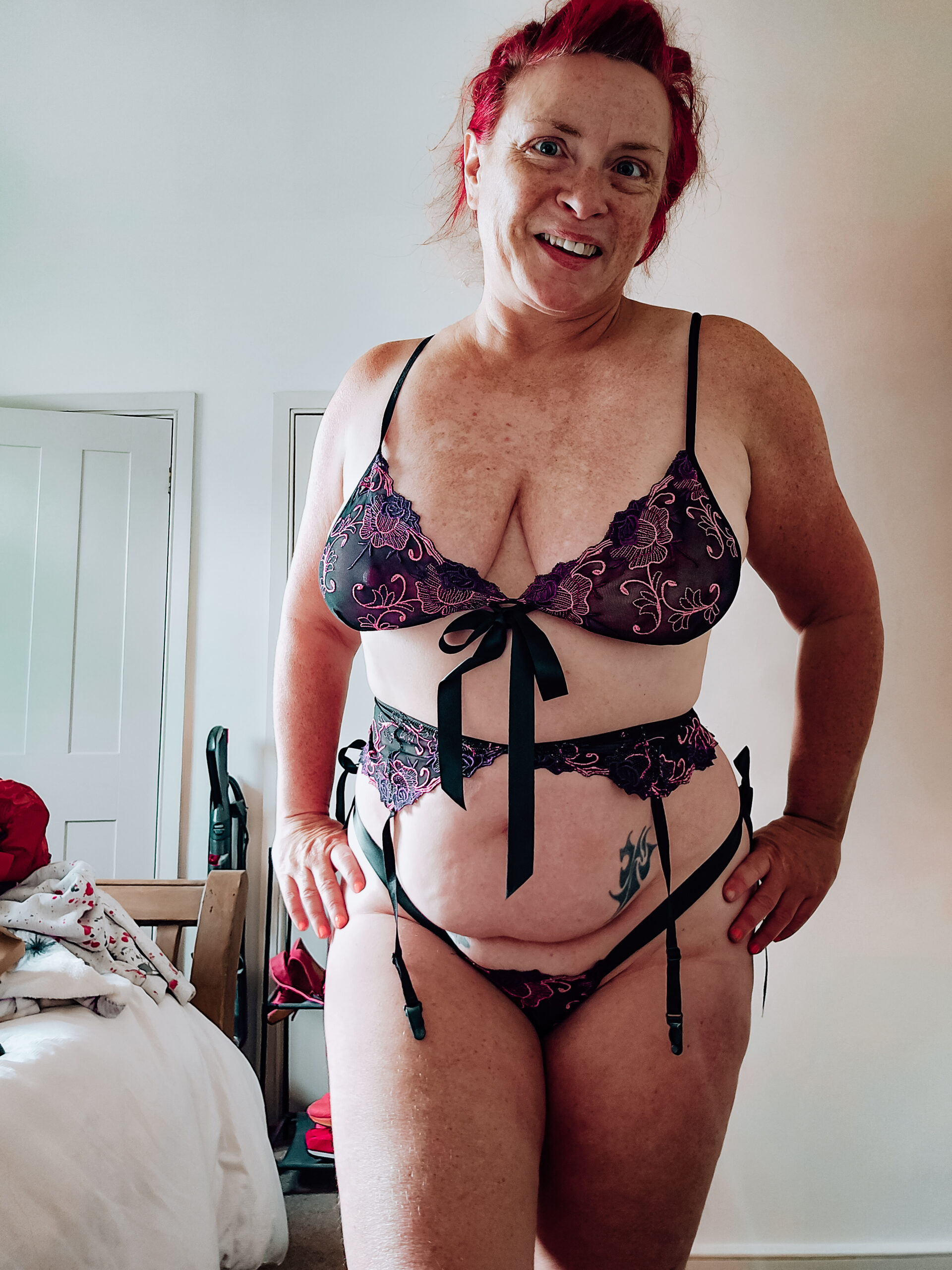Graysexuality In Relationships: Learning How To Thrive With Low Sexual Desire

Understanding Graysexuality
Navigating relationships can be complex, especially when one or both partners experience variations in sexual desire. Graysexuality, characterized by fluctuating or lower-than-average sexual interest, presents unique challenges and opportunities within romantic partnerships. Understanding this spectrum of sexuality is crucial for fostering open communication, empathy, and ultimately, thriving together.
Defining Graysexuality
Graysexuality is a sexual orientation that encompasses individuals whose sexual desire falls somewhere between purely asexual (experiencing no sexual attraction) and exclusively heterosexual or homosexual.
Those who identify as graysexual may experience low sexual desire or find their desire fluctuates over time. It’s important to note that graysexuality isn’t a choice, nor is it a phase. It’s a genuine expression of one’s sexual identity and should be respected as such.
Graysexual individuals can have fulfilling relationships with partners who understand and accept their unique needs. Open communication, empathy, and a willingness to explore different ways to connect emotionally and physically are essential for creating a harmonious and satisfying partnership.
Spectrum of Sexual Desire
Navigating relationships can be complex, especially when one or both partners experience variations in sexual desire. Graysexuality, characterized by fluctuating or lower-than-average sexual interest, presents unique challenges and opportunities within romantic partnerships. Understanding this spectrum of sexuality is crucial for fostering open communication, empathy, and ultimately, thriving together.
Graysexuality is a sexual orientation that encompasses individuals whose sexual desire falls somewhere between purely asexual (experiencing no sexual attraction) and exclusively heterosexual or homosexual. Those who identify as graysexual may experience low sexual desire or find their desire fluctuates over time. It’s important to note that graysexuality isn’t a choice, nor is it a phase. It’s a genuine expression of one’s sexual identity and should be respected as such.
Graysexual individuals can have fulfilling relationships with partners who understand and accept their unique needs. Open communication, empathy, and a willingness to explore different ways to connect emotionally and physically are essential for creating a harmonious and satisfying partnership.
Common Misconceptions
Understanding graysexuality is crucial for fostering healthy and supportive relationships. Graysexual individuals experience sexual desire that falls between asexual and exclusively heterosexual or homosexual experiences. This can manifest as low overall desire or fluctuating levels of interest over time.
It’s important to debunk common misconceptions surrounding graysexuality:
- Graysexuality is not a choice or a phase; it’s a genuine expression of sexual identity.
- Graysexual individuals can be in fulfilling relationships, but they require partners who are understanding and accepting of their needs.
- Open communication and empathy are vital for navigating the complexities of graysexuality in relationships.
By fostering open dialogue and mutual respect, couples can create a space where both partners feel seen, heard, and valued, regardless of their individual levels of sexual desire.
Communication is Key
Navigating relationships successfully often hinges on clear and compassionate communication. This is especially true when dealing with variations in sexual desire, a common experience within romantic partnerships. Understanding diverse sexualities, such as graysexuality, is crucial for fostering empathy and creating fulfilling connections.
Open and Honest Conversations
Open and honest conversations are the cornerstone of any healthy relationship, but they become even more critical when navigating differences in sexual desire. For couples where one or both partners identify as graysexual, clear communication about needs, desires, and boundaries is essential for building a strong and fulfilling partnership.
Graysexual individuals may experience fluctuating or lower levels of sexual interest compared to their partners. These differences can sometimes lead to misunderstandings or feelings of rejection if not addressed openly. It’s important to create a safe space where both partners feel comfortable expressing their feelings and expectations without fear of judgment.
Encouraging open dialogue involves active listening, validation, and a willingness to compromise. Partners should strive to understand each other’s perspectives and find ways to meet each other’s needs, even if those needs don’t always align perfectly. This might involve exploring alternative ways to connect emotionally and physically, prioritizing intimacy outside of the bedroom, or simply checking in regularly about each other’s desires and comfort levels.
Active Listening and Validation
Communication is key when navigating relationships, especially those involving different sexual desires. Open and honest conversations allow partners to express their needs, wants, and boundaries without fear of judgment. Active listening, where you truly hear and understand your partner’s perspective, is crucial for fostering empathy and connection.
Validation is equally important. Acknowledging and accepting your partner’s feelings, even if you don’t fully understand them, demonstrates respect and creates a safe space for vulnerability. Remember that relationships are about finding ways to meet each other’s needs, even when those needs differ.
Addressing Power Imbalances
Addressing power imbalances in communication is crucial for creating equitable and healthy relationships. When one person consistently holds more power, it can lead to imbalances where their voice is prioritized, while the other’s needs or perspectives are minimized or ignored.
Recognizing and addressing these power imbalances starts with self-awareness. Individuals in positions of privilege need to critically examine their communication patterns and consider how they might inadvertently be contributing to the imbalance.
Active listening is essential for creating a more balanced dynamic. It involves truly hearing what the other person is saying, both verbally and nonverbally, without interrupting or immediately offering solutions.
It also requires reflecting back what you hear to ensure understanding and validating the speaker’s feelings.
Language choice can also impact power dynamics. Using respectful and inclusive language, avoiding jargon or overly technical terms, and being mindful of tone all contribute to a more equitable communication environment.
Creating space for all voices is crucial. This means encouraging the quieter partner to speak up, actively seeking their input, and ensuring they feel comfortable expressing their thoughts and feelings without fear of judgment or dismissal.
Navigating Intimacy Beyond Sex
Navigating intimacy within a relationship goes beyond physical acts; it encompasses emotional connection, shared experiences, and mutual understanding. Graysexuality, characterized by fluctuating or lower-than-average sexual desire, presents unique considerations for couples seeking to cultivate fulfilling connections. Understanding this spectrum of sexuality is essential for fostering open communication, empathy, and ultimately, building a strong and supportive partnership.
Exploring Non-sexual Intimacy
Navigating intimacy within a relationship goes beyond physical acts; it encompasses emotional connection, shared experiences, and mutual understanding. Graysexuality, characterized by fluctuating or lower-than-average sexual desire, presents unique considerations for couples seeking to cultivate fulfilling connections. Understanding this spectrum of sexuality is essential for fostering open communication, empathy, and ultimately, building a strong and supportive partnership.
- Prioritize Emotional Intimacy: Graysexual individuals may find fulfillment in activities like cuddling, talking, shared hobbies, or meaningful conversations.
- Explore Non-Sexual Physical Touch: Holding hands, giving massages, or simply sitting close together can foster intimacy without sexual pressure. premium sex dolls
- Communicate Openly and Honestly: Create a safe space for both partners to express their needs, desires, and boundaries regarding sex and intimacy.
- Be Patient and Understanding: Sexual desire can fluctuate, so be patient with each other’s needs and avoid pressure or guilt-tripping.
- Focus on Shared Experiences: Engage in activities you both enjoy to strengthen your bond and create lasting memories.
Focusing on Emotional Connection
Navigating intimacy beyond sex in a relationship, particularly when one partner identifies as graysexual, requires a shift in perspective. It’s about fostering emotional connection and understanding that intimacy bdsm chastity belt exists on a spectrum far beyond physical acts. Graysexuality, characterized by fluctuating or lower-than-average sexual desire, necessitates an exploration of alternative ways to connect and nurture the relationship.
Prioritizing emotional intimacy becomes paramount. This involves creating a space for vulnerability, sharing thoughts and feelings openly, and engaging in meaningful conversations. Activities like cuddling, holding hands, giving massages, or simply spending quality time together can foster closeness without the pressure of sexual acts.
Understanding that physical touch can be intimate even without sexual intent is crucial. Non-sexual physical touch, such as a gentle hug or a comforting hand on the arm, can convey love and support, strengthening the emotional bond between partners.
Open communication remains the cornerstone of any healthy relationship, but it takes on even greater significance in relationships where sexual desires differ. Partners need to create a safe space where they feel comfortable expressing their needs, wants, and boundaries regarding sex and intimacy without fear of judgment or pressure.
It’s essential for partners to actively listen to each other, validate each other’s feelings, and strive to understand each other’s perspectives. This requires patience, empathy, and a willingness to compromise.
Creating Shared Experiences
Navigating intimacy beyond sex in a relationship where one partner identifies as graysexual involves shifting the focus from solely physical acts to encompass emotional connection, shared experiences, and mutual understanding. Graysexuality, characterized by fluctuating or lower-than-average sexual desire, necessitates an exploration of alternative ways to connect and nurture the relationship.
Prioritizing emotional intimacy becomes paramount. This involves creating a space for vulnerability, sharing thoughts and feelings openly, and engaging in meaningful conversations. Activities like cuddling, holding hands, giving massages, or simply spending quality time together can foster closeness without the pressure of sexual acts.
Understanding that physical touch can be intimate even without sexual intent is crucial. Non-sexual physical touch, such as a gentle hug or a comforting hand on the arm, can convey love and support, strengthening the emotional bond between partners.
Open communication remains the cornerstone of any healthy relationship, but it takes on even greater significance in relationships where sexual desires differ. Partners need to create a safe space where they feel comfortable expressing their needs, wants, and boundaries regarding sex and intimacy without fear of judgment or pressure. It’s essential for partners to actively listen to each other, validate each other’s feelings, and strive to understand each other’s perspectives. This requires patience, empathy, and a willingness to compromise.
Beyond these foundational elements, exploring shared interests and engaging in activities that bring joy to both partners is crucial. This could involve trying new hobbies together, taking weekend trips, or simply enjoying a favorite meal while sharing stories and laughter. These shared experiences create lasting memories and strengthen the bond between partners, fostering a sense of connection and intimacy beyond the realm of sex.

Prioritizing Self-Care
Prioritizing self-care is essential for anyone, but it becomes particularly important when navigating the complexities of a relationship where one or both partners experience variations in sexual desire. Understanding graysexuality and its impact on individual needs allows partners to create a supportive environment that fosters emotional well-being.
Understanding Your Needs and Boundaries
Prioritizing self-care is essential for anyone, but it becomes particularly important when navigating the complexities of a relationship where one or both partners experience variations in sexual desire. Understanding graysexuality and its impact on individual needs allows partners to create a supportive environment that fosters emotional well-being.
- Recognize Your Needs: Understand your own sexual desires, boundaries, and comfort levels. What makes you feel comfortable and fulfilled?
- Communicate Openly: Share your needs and expectations with your partner in a clear and honest manner. This creates a foundation for understanding and mutual respect.
- Set Boundaries: It’s okay to say “no” or ask for modifications to activities that make you uncomfortable. Respecting your own boundaries is essential for your well-being.
- Engage in Self-Soothing Activities: Find healthy ways to manage stress and anxiety, such as exercise, meditation, spending time in nature, or pursuing hobbies you enjoy.
- Practice Self-Compassion: Be kind to yourself and acknowledge that your desires are valid. Don’t pressure yourself to conform to societal expectations or your partner’s needs if they don’t align with yours.
Managing Expectations
Managing expectations is crucial for fostering healthy relationships, especially when navigating differences in sexual desire like those experienced by individuals identifying as graysexual. Understanding and accepting that sexual desire can fluctuate and vary greatly between individuals is essential.
It’s important to avoid putting pressure on your partner or expecting them to conform to a certain standard of sexual activity. Instead, focus on open communication, empathy, and finding ways to connect emotionally and physically that meet both partners’ needs.
Seeking Support When Needed
Navigating relationships successfully often hinges on clear and compassionate communication. This is especially true when dealing with variations in sexual desire, a common experience within romantic partnerships. Understanding diverse sexualities, such as graysexuality, is crucial for fostering empathy and creating fulfilling connections.
Open and honest conversations are the cornerstone of any healthy relationship, but they become even more critical when navigating differences in sexual desire. For couples where one or both partners identify as graysexual, clear communication about needs, desires, and boundaries is essential for building a strong and fulfilling partnership.
Graysexual individuals may experience fluctuating or lower levels of sexual interest compared to their partners. bralettes These differences can sometimes lead to misunderstandings or feelings of rejection if not addressed openly. It’s important to create a safe space where both partners feel comfortable expressing their feelings and expectations without fear of judgment.
Encouraging open dialogue involves active listening, validation, and a willingness to compromise. Partners should strive to understand each other’s perspectives and find ways to meet each other’s needs, even if those needs don’t always align perfectly. This might involve exploring alternative ways to connect emotionally and physically, prioritizing intimacy outside of the bedroom, or simply checking in regularly about each other’s desires and comfort levels.
Communication is key when navigating relationships, especially those involving different sexual desires. Open and honest conversations allow partners to express their needs, wants, and boundaries without fear of judgment. Active listening, where you truly hear and understand your partner’s perspective, is crucial for fostering empathy and connection.
Validation is equally important. Acknowledging and accepting your partner’s feelings, even if you don’t fully understand them, demonstrates respect and creates a safe space for vulnerability. Remember that relationships are about finding ways to meet each other’s needs, even when those needs differ.
Addressing power imbalances in communication is crucial for creating equitable and healthy relationships. When one person consistently holds more power, it can lead to imbalances where their voice is prioritized, while the other’s needs or perspectives are minimized or ignored.
Recognizing and addressing these power imbalances starts with self-awareness. Individuals in positions of privilege need to critically examine their communication patterns and consider how they might inadvertently be contributing to the imbalance.
Active listening is essential for creating a more balanced dynamic. It involves truly hearing what the other person is saying, both verbally and nonverbally, without interrupting or immediately offering solutions.
It also requires reflecting back what you hear to ensure understanding and validating the speaker’s feelings.
Language choice can also impact power dynamics. Using respectful and inclusive language, avoiding jargon or overly technical terms, and being mindful of tone all contribute to a more equitable communication environment.
Creating space for all voices is crucial. This means encouraging the quieter partner to speak up, actively seeking their input, and ensuring they feel comfortable expressing their thoughts and feelings without fear of judgment or dismissal.
Navigating intimacy within a relationship goes beyond physical acts; it encompasses emotional connection, shared experiences, and mutual understanding. Graysexuality, characterized by fluctuating or lower-than-average sexual desire, presents unique considerations for couples seeking to cultivate fulfilling connections. Understanding this spectrum of sexuality is essential for fostering open communication, empathy, and ultimately, building a strong and supportive partnership.
Navigating intimacy within a relationship goes beyond physical acts; it encompasses emotional connection, shared experiences, and mutual understanding. Graysexuality, characterized by fluctuating or lower-than-average sexual desire, presents unique considerations for couples seeking to cultivate fulfilling connections. Understanding this spectrum of sexuality is essential for fostering open communication, empathy, and ultimately, building a strong and supportive partnership.
- Prioritize Emotional Intimacy: Graysexual individuals may find fulfillment in activities like cuddling, talking, shared hobbies, or meaningful conversations.
- Explore Non-Sexual Physical Touch: Holding hands, giving massages, or simply sitting close together can foster intimacy without sexual pressure. male prostate plugs
- Communicate Openly and Honestly: Create a safe space for both partners to express their needs, desires, and boundaries regarding sex and intimacy.
- Be Patient and Understanding: Sexual desire can fluctuate, so be patient with each other’s needs and avoid pressure or guilt-tripping.
- Focus on Shared Experiences: Engage in activities you both enjoy to strengthen your bond and create lasting memories.
Seeking support when needed is crucial for individual well-being and relationship health, particularly when navigating the complexities of graysexuality. Recognizing that asking for help is a sign of strength, not weakness, can empower individuals to access resources and build stronger connections.
Here are some ways to seek support:
- Online Communities: Connect with others who identify as graysexual through online forums, social media groups, or dedicated websites. Sharing experiences and advice can provide valuable insights and a sense of community.
- Therapy or Counseling: Seeking professional guidance from a therapist or counselor specializing in sexuality or relationship issues can offer personalized support and tools for navigating challenges.
- Support Groups: Local or online support groups specifically designed for graysexual individuals or couples can provide a safe space for sharing experiences, offering advice, and building connections with others who understand.
Building a Supportive Relationship Dynamic
Building a supportive relationship dynamic in the context of graysexuality requires understanding, empathy, and open communication. Recognizing that sexual desire can fluctuate and vary between individuals is essential. Creating a space where both partners feel comfortable expressing their needs, desires, and boundaries without fear of judgment fosters emotional intimacy and strengthens the bond.
Empathy and Patience
Building a supportive relationship dynamic in the context of graysexuality requires understanding, empathy, and open communication. Recognizing that sexual desire can fluctuate and vary between individuals is essential. Creating a space where both partners feel comfortable expressing their needs, desires, and boundaries without fear of judgment fosters emotional intimacy and strengthens the bond.
Here are some key elements to consider:
- Open Communication: Encourage honest and transparent conversations about sex, intimacy, and relationship expectations.
- Empathy and Understanding: Strive to understand your partner’s perspective and feelings regarding their sexual desire.
- Flexibility and Adaptability: Be willing to adjust plans or explore alternative ways to connect when sexual desire differs.
- Focus on Emotional Intimacy: Prioritize non-sexual expressions of love, affection, and connection, such as cuddling, talking, shared hobbies, or meaningful conversations.
- Seek Support When Needed: Don’t hesitate to reach out to therapists, counselors, or support groups specializing in sexuality or relationships if you need guidance.
Remember that a healthy relationship is built on mutual respect, understanding, and a willingness to work together to create a fulfilling experience for both partners.

Flexibility and Adaptability
Navigating intimacy within a relationship goes beyond physical acts; it encompasses emotional connection, shared experiences, and mutual understanding. Graysexuality, characterized by fluctuating or lower-than-average sexual desire, presents unique considerations for couples seeking to cultivate fulfilling connections. Understanding this spectrum of sexuality is essential for fostering open communication, empathy, and ultimately, building a strong and supportive partnership.
Prioritizing emotional intimacy becomes paramount. This involves creating a space for vulnerability, sharing thoughts and feelings openly, and engaging in meaningful conversations. Activities like cuddling, holding hands, giving massages, or simply spending quality time together can foster closeness without the pressure of sexual acts. Understanding that physical touch can be intimate even without sexual intent is crucial. Non-sexual physical touch, such as a gentle hug or a comforting hand on the arm, can convey love and support, strengthening the emotional bond between partners.
Open communication remains the cornerstone of any healthy relationship, but it takes on even greater significance in relationships where sexual desires differ. Partners need to create a safe space where they feel comfortable expressing their needs, wants, and boundaries regarding sex and intimacy without fear of judgment or pressure. It’s essential for partners to actively listen to each other, validate each other’s feelings, and strive to understand each other’s perspectives. This requires patience, empathy, and a willingness to compromise.
Beyond these foundational elements, exploring shared interests and engaging in activities that bring joy to both partners is crucial. This could involve trying new hobbies together, taking weekend trips, or simply enjoying a favorite meal while sharing stories and laughter. These shared experiences create lasting memories and strengthen the bond between partners, fostering a sense of connection and intimacy beyond the realm of sex.
Prioritizing self-care is essential for anyone, but it becomes particularly important when navigating the complexities of a relationship where one or both partners experience variations in sexual desire. Understanding graysexuality and its impact on individual needs allows partners to create a supportive environment that fosters emotional well-being.

Recognize Your Needs: Understand your own sexual desires, boundaries, and comfort levels. What makes you feel comfortable and fulfilled? Communicate Openly: Share your needs and expectations with your partner in a clear and honest manner. This creates a foundation for understanding and mutual respect. Set Boundaries: It’s okay to say “no” or ask for modifications to activities that make you uncomfortable. Respecting your own boundaries is essential for your well-being. Engage in Self-Soothing Activities: Find healthy ways to manage stress and anxiety, such as exercise, meditation, spending time in nature, or pursuing hobbies you enjoy. Practice Self-Compassion: Be kind to yourself and acknowledge that your desires are valid. Don’t pressure yourself to conform to societal expectations or your partner’s needs if they don’t align with yours.
Managing expectations is crucial for fostering healthy relationships, especially when dealing with differences in sexual desire like those experienced by individuals identifying as graysexual. Understanding and accepting that sexual desire can fluctuate and vary greatly between individuals is essential.
fur tail butt plugs It’s important to avoid putting pressure on your partner or expecting them to conform to a certain standard of sexual activity. Instead, focus on open communication, empathy, and finding ways to connect emotionally and physically that meet both partners’ needs.
Respecting Individual Differences
Building a supportive relationship dynamic when one or both partners identify as graysexual requires a shift in perspective and a willingness to embrace the fluidity of desire. erotic prostate gear
Open and honest communication is paramount. Creating a safe space where both partners feel comfortable expressing their needs, desires, and boundaries without fear of judgment is essential for fostering emotional intimacy and trust.
Understanding that sexual desire can fluctuate and vary greatly between individuals is crucial. It’s important to avoid putting pressure on your partner or expecting them to conform to a certain standard of sexual activity. Instead, focus on open communication, empathy, and finding ways to connect emotionally and physically that meet both partners’ needs.
Empathy and respect for each other’s experiences are vital. Listen actively to your partner’s feelings and perspectives regarding their sexual desire, even if they differ from your own. Validating their experiences shows them that you care about their well-being and that you are committed to working together as a team.
Beyond sexual intimacy, explore other ways to connect emotionally and physically. Cuddling, holding hands, giving massages, or simply spending quality time together can foster closeness without the pressure of sexual acts.
Remember, intimacy encompasses much more than physical intercourse. It’s about creating a strong emotional bond built on trust, respect, and understanding.
Dive into this blog post
Find everything here
- Why Does Lip Filler Migration Happen - November 4, 2025
- What Is The Best Time Of Year To Get Bum Filler Injections? - November 3, 2025
- What Are The Best CBD Gummies For Sleep And Pain Relief - November 1, 2025
